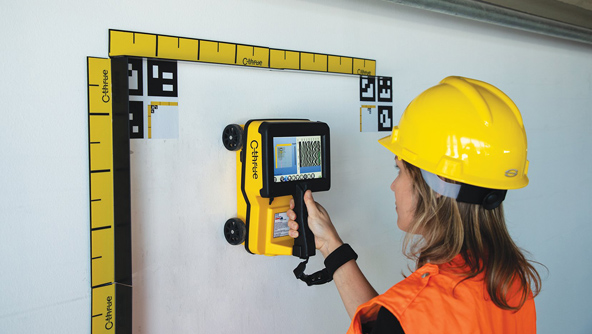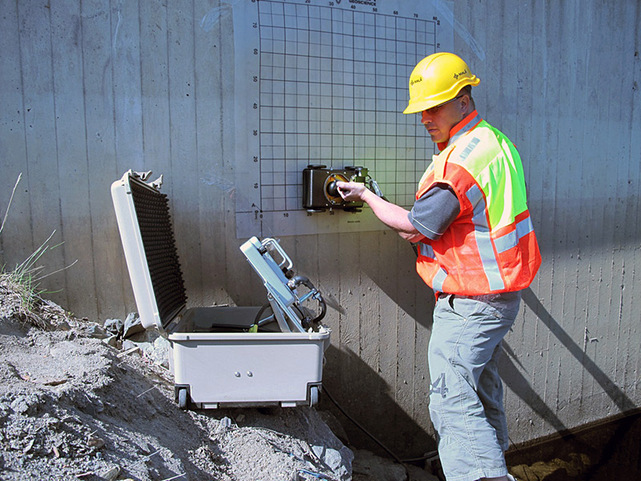Expert Tips for Optimal Concrete Scanning Outcomes
Expert Tips for Optimal Concrete Scanning Outcomes
Blog Article
Past the Surface Area: Leveraging Advanced Concrete Scanning Techniques for Unmatched Accuracy and Understanding
Advanced concrete scanning techniques have arised as vital devices in this pursuit, offering a glimpse below the surface area to introduce a globe of critical understandings. By harnessing cutting-edge technologies, professionals can discover anomalies, analyze the condition of concrete structures, and make informed choices that form the course of jobs.
Significance of Advanced Concrete Scanning
The relevance of making use of advanced concrete scanning techniques lies in the unequaled precision they use for detecting sub-surface anomalies and guaranteeing structural stability. By utilizing advanced innovations such as ground-penetrating radar (GPR), electro-magnetic induction, and progressed sonar imaging, building experts can dig under the surface area of concrete frameworks with a degree of accuracy that far surpasses traditional evaluation techniques. Concrete Scanning. These techniques enable the identification of hidden threats like rebar deterioration, gaps, avenues, or post-tension wires that can jeopardize the stability and safety of a structure over time
Moreover, progressed concrete scanning gives very useful understandings into the overall condition of a concrete element without the demand for invasive measures, minimizing the threat of triggering damage throughout the evaluation process. The capacity to identify the exact area and depth of possible problems enables for targeted repairs and upkeep, ultimately lengthening the life expectancy of the framework and enhancing its performance. In essence, the relevance of advanced concrete scanning can not be overemphasized in the world of building and infrastructure upkeep, where precision and dependability are critical.
Sorts Of Cutting-Edge Technologies

Anomalies and Problem Discovery

In enhancement to GPR, concrete scanning methods like thermography and impact-echo testing are additionally reliable in spotting defects and abnormalities. By leveraging these innovative methods, professionals can proactively attend to structural issues, making certain the long life and security of concrete frameworks.
Assessing Concrete Problem
How can engineers properly evaluate the condition of concrete structures to guarantee their long life and safety? Different innovative concrete scanning techniques are employed for this function. Ground-penetrating radar (GPR) is typically made use of to examine the interior framework of concrete, spotting spaces, splits, and various other abnormalities that might endanger its strength.
Additionally, aesthetic examination remains an essential part of concrete condition evaluation. Engineers visually take a look at the surface area for indicators of deterioration, such as spalling, breaking, or discoloration. Combining non-destructive testing methods with visual evaluations permits a detailed analysis of concrete problem, making it possible for designers to recognize possible problems beforehand and apply prompt upkeep or company website fixings. By leveraging these innovative strategies, designers can ensure the lasting resilience and safety of concrete structures.
Enhancing Decision-Making Procedures
In the realm of framework administration, optimizing decision-making procedures is important for ensuring the reliable maintenance and long life of concrete structures. Enhanced decision-making procedures in concrete management involve using advanced scanning strategies to gather detailed data on the problem of frameworks. By leveraging technologies such as ground-penetrating radar and 3D imaging, stakeholders can make enlightened decisions regarding fixing, support, or replacement techniques.
These progressed scanning strategies supply indispensable understandings into the interior make-up of concrete, determining possible issues such as gaps, fractures, or deterioration that might not be visible on the surface area. This level of in-depth details enables aggressive maintenance planning, minimizing the risk of architectural failings and enhancing the total lifespan of concrete frameworks.
Additionally, by including digital documentation and analysis tools into the decision-making process, stakeholders can track the development of concrete conditions over time, enabling predictive maintenance strategies and optimizing source appropriation. Inevitably, the assimilation of innovative concrete scanning strategies boosts decision-making procedures by offering unrivaled accuracy, understanding, and performance in infrastructure management.
Conclusion
Finally, advanced concrete scanning strategies supply unparalleled precision and insight in identifying anomalies, problems, and assessing the problem of concrete frameworks. By leveraging innovative innovations, decision-making processes can be improved, causing more efficient and enlightened options for preserving and repairing concrete framework. These strategies play a vital role in ensuring the security and longevity of concrete frameworks, making them a vital tool in the area of building and engineering.
Additionally, advanced concrete scanning supplies very useful understandings into the general condition of a concrete aspect without the need for invasive procedures, decreasing the danger of triggering damages during the assessment process - Concrete Scanning. One more innovative innovation is why not find out more 3D X-ray scanning, which gives detailed pictures of the interior structure of concrete, offering useful details without the demand for destructive testing. In Addition, Concrete Cover Meters are made use of to measure the thickness of concrete cover over support bars accurately. Improved decision-making procedures in concrete management involve making use of advanced scanning methods to collect detailed data on the problem of frameworks.In conclusion, advanced concrete scanning methods supply unmatched accuracy and insight in finding abnormalities, defects, and evaluating the condition of concrete structures
Report this page